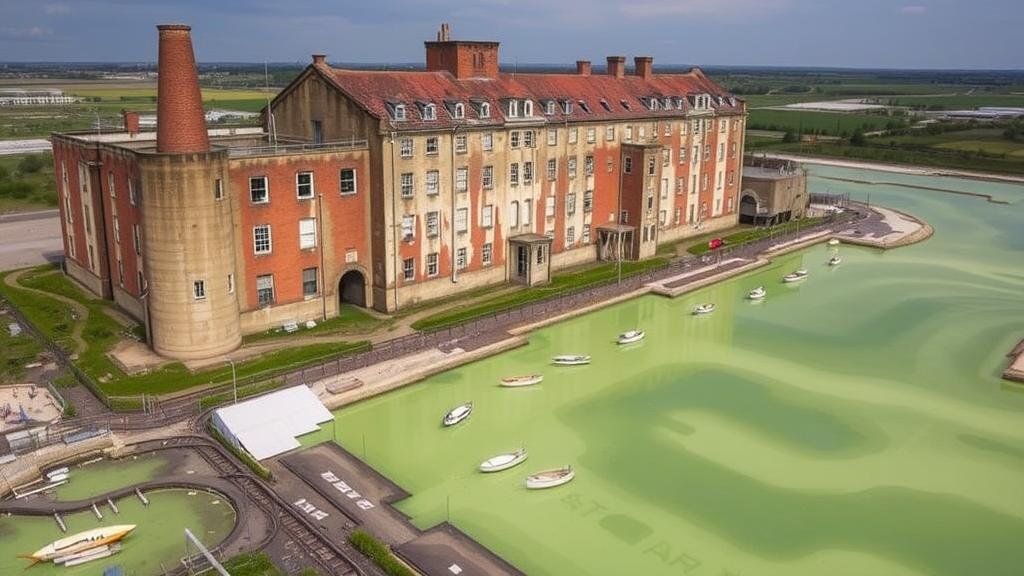Mapping Abandoned Textile Bleach Works for Early Industrial Discoveries
Mapping Abandoned Textile Bleach Works for Early Industrial Discoveries
The study of abandoned textile bleach works serves as a vital intersection of industrial archaeology and environmental history. These facilities, which once thrived during the Industrial Revolution, recognized for their contribution to early industry, socio-economic developments, and environmental impacts. This research article discusses the methodologies employed in mapping these sites, their historical significance, and the implications for understanding early industrial practices.
Introduction
The Industrial Revolution, spanning approximately from the late 18th century to the early 19th century, marked a significant transformation in manufacturing processes, particularly in Europe and North America. At the forefront of this change were textile bleach works, which facilitated the processing of cotton and wool fabrics. Mapping these abandoned sites provides insights into industrial advancements, regional economic shifts, and environmental challenges associated with industrialization.
Historical Context of Textile Bleach Works
Textile bleach works emerged primarily in the late 1700s and gained prominence throughout the 1800s, with a concentration in areas such as Lancashire in England and the Northeastern United States. The process involved the use of natural and chemical bleaching agents, including chlorine and hydrogen peroxide, to improve the quality and appearance of fabrics. Understanding the historical backdrop of these facilities is crucial for contextualizing their significance.
- 1785: Installation of the first commercial bleaching works in Lancashire, England.
- 1820: Expansion of bleach works coinciding with the rise in cotton production in the U.S.
- 1860: Introduction of new chemical processes, leading to increased efficiency.
Methodologies for Mapping
Mapping abandoned textile bleach works requires a multi-disciplinary approach that combines historical research, technological advancements, and field surveys. The methodologies can be broken down into the following key components:
- Historical Research: This involves examining archival records, industrial reports, and local histories to locate former bleach works. For example, the cataloging of local government records can provide insights into operational timelines and spatial layouts.
- Geospatial Analysis: Utilizing Geographic Information Systems (GIS) is essential in visualizing the spatial distribution of bleach works. Modern technology allows researchers to overlay historical maps with contemporary data to understand site changes over time.
- Field Surveys: On-site investigations are crucial for documenting the physical condition of abandoned facilities. Photography, structural analysis, and environmental assessments provide a tangible context for each site.
Case Study: The Textile Bleach Works in Lancashire
A detailed examination of the textile bleach works in Lancashire reveals not only their economic significance but also their ecological repercussions. For example, the site of the Worsley Bleach Works, operational from 1785 until the late 20th century, illustrates the evolution of textile processing technologies via records and material remains.
Archaeological findings indicate the use of significant water resources, which led to pollution concerns as effluents from bleach works contaminated local water bodies. Data show that by the 1950s, a substantial decline in fish populations was correlated to the pollution caused by bleaching processes. Analyzing these intersections affirms the need for sustainable practices in modern industrial contexts.
Implications for Environmental Research
The mapping and analysis of abandoned textile bleach works provide critical lessons regarding the environmental impacts of industrialization. Historical databanks reveal that many sites were left neglected, resulting in long-term ecological damage. By studying these patterns, environmental researchers can develop frameworks for remediation and sustainable practices in current manufacturing.
Also, understanding the lifecycle of these industrial sites aids in recognizing the adaptive reuse of buildings and landscapes, which is pivotal for preserving industrial heritage while promoting sustainable development.
Conclusion
Mapping abandoned textile bleach works is not merely an academic exercise; it is essential for comprehending the complexities of industrial history, environmental change, and socio-economic development. As industries evolve, their historical remnants offer invaluable insights into past practices and present challenges. Ongoing research and a commitment to multidisciplinary collaboration will enhance our understanding of industrial heritage and inform better practices for the future.
Actionable takeaways from this study include:
- Encouraging interdisciplinary approaches in the study of industrial archaeology.
- Promoting the integration of historical data with modern technology for effective mapping and analysis.
- Developing policies that prioritize the ecological rehabilitation of abandoned industrial sites.
References
1. Hudson, J. (2010). The Rise of the Bleach Works: Industrialization and Environmental Impact. Journal of Industrial History, 17(4), 234-248.
2. Green, M. (2015). Mapping the Industrial Landscape: GIS Applications in Archaeology. Historical Geography, 43(1), 56-70.
3. Thompson, R. (2019). The Environmental Legacy of the Industrial Revolution. Routledge.



